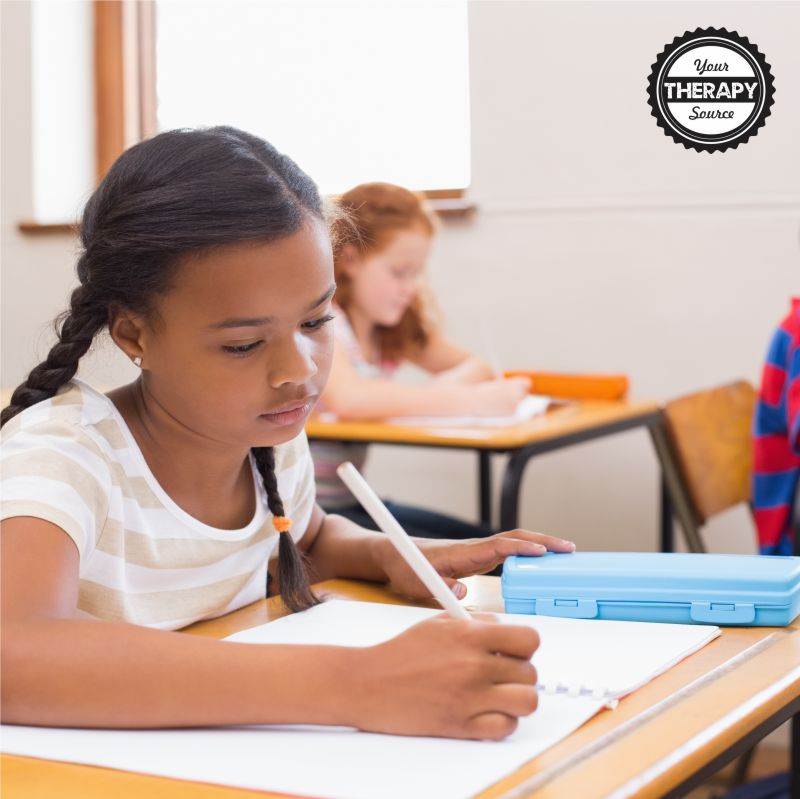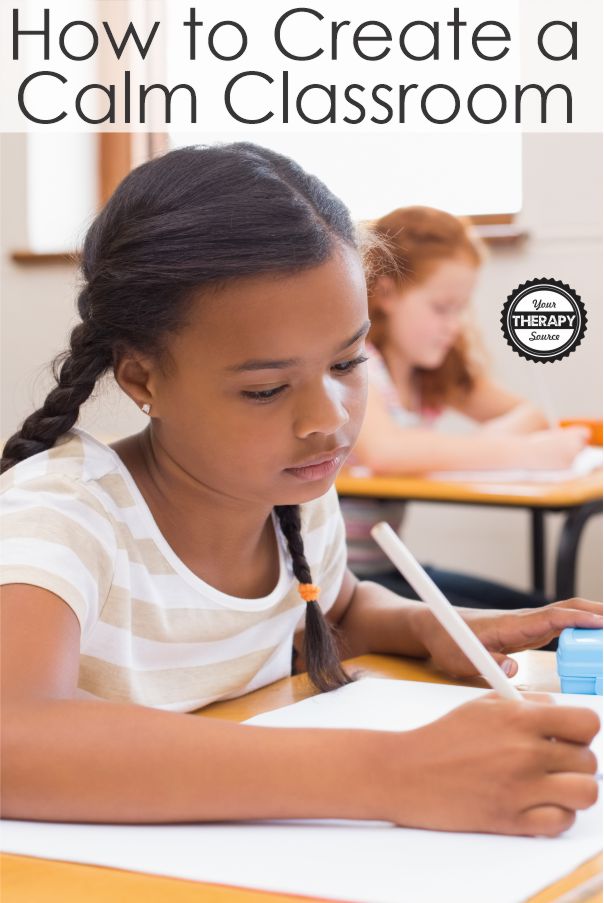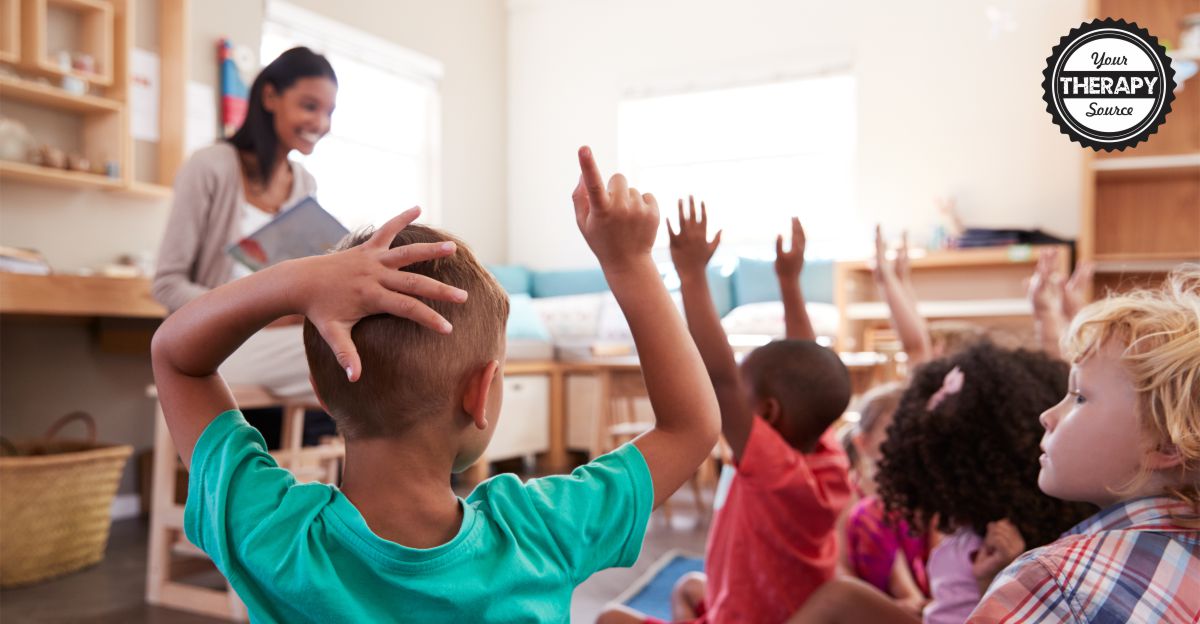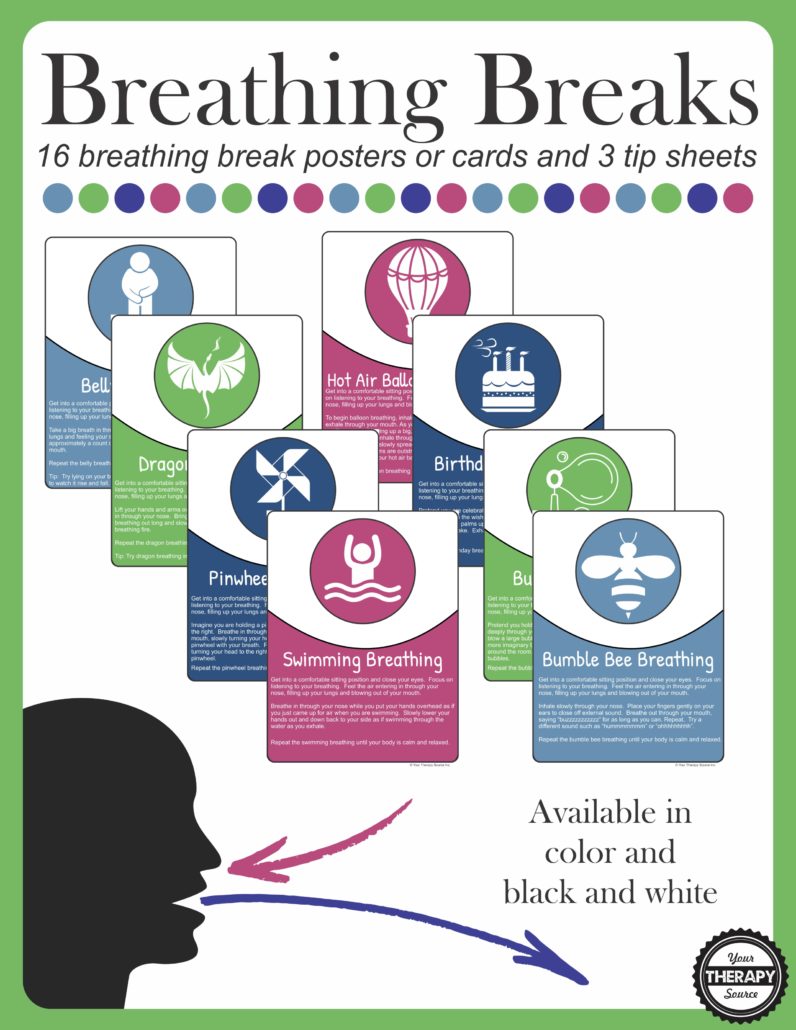How to Create a Calm Classroom
Classrooms can be busy! Transitions, group work, recess, brain breaks… it can all add up to chaos and sensory overload for your students and teachers. When students are in a regulated state, they can be ready to learn. Teachers can try different strategies to learn how to create a calm classroom environment to encourage learning.

One of the most difficult times to get your students ready to learn is after movement breaks in the classroom, recess, or lunch time.
How to Get Students Ready to Learn After Brain Breaks or Recess
Do your students have trouble settling down after brain breaks or recess time? This can be a difficult time to create a calm classroom.
Maybe you are hesitant to incorporate movement into the school day because you loathe the aftermath of getting the high energy students to return to academic work.
Research indicates that students learn better after movement breaks. Therapists, teachers, and parents know this but squeezing in brain breaks and recess can be difficult when students have high academic workloads.
To improve student’s behaviors after brain breaks one of the easiest ways is to follow the same brain break routine every time so everyone knows what to expect.
What is Brain Break Routine?
When we follow the same steps each time we complete an activity, students know what to do. The directions are clear and consistent. For example, an effective brain break routine may consist of:
- Deep breathing.
- Brain Break Activities.
- Review or introduction of academic material with movement.
- Cool down with exercises to improve focus such as yoga.
- Repeat Deep breathing.
Routines can help BUT, have you ever considered your own behaviors or actions regarding how your students react following movement breaks?
Our actions, behaviors and emotional states significantly influence the outcomes of children.
Whether your students are coming back from physical activity or you need them to focus on the next lesson, you can try different strategies to gain their attention.
5 Instructional Strategies to Try to Learn How to Create a Calm Classroom
Not only are these suggestions suitable for after brain breaks or recess, but they can be applied to anytime you need to have children learning a new skill.
- Talk in a low, calm voice. If we start the lesson or activity out with a quiet, low, calm tone of voice children will model our behavior.
- Minimize your own movement. Stay in one place while you instruct the class so the students can direct their focus to one location.
- Minimize your own gestures. Try not to only stay in one place but also try to start the lesson out minimizing your gestures. Avoid talking with your hands, pointing and general fidgeting yourself.
- Change the lighting. If possible dim the lighting to encourage the students to return to a calm state with their bodies ready to learn.
- Direct the student’s attention to an area that is organized, clutter-free and has limited visual distractions. Perhaps have an area in the room that has decreased visual input. Position yourself in that area so the students can focus their attention directly on you.
Here are several more suggestions to learn how to create a calm classroom:
Help students who continue to fidget.
Offer students self-assessment checklist to determine if they are ready to learn.
Provide Ready to Work Clip Charts.
Teach deep breathing exercises to help calm the class.
Provide different calming strategies for students.
Offer alternative seating.
How to Create a Calm Classroom with a Calm Down Corner
If you want to create a space in your classroom or home to help children to calm down, then check out all of these free calm down corner ideas to print to help your students take a break.
Helpful Resource to Get Started Today with Your Calm Classroom
Breathing Breaks: This digital download is a collection of 16 deep breathing exercises and 3 tip sheets for students and adults of all ages!
Deep breathing exercises can help to decrease stress, reduce anxiety, remain calm, strengthen sustained attention, sharpen the ability to learn and more!
This packet includes 16 full page breathing exercises and 3 tips sheets in color or black and white. In addition, the breathing exercises are provided 4 to a page to make smaller cards or booklets. FIND OUT MORE INFORMATION.





